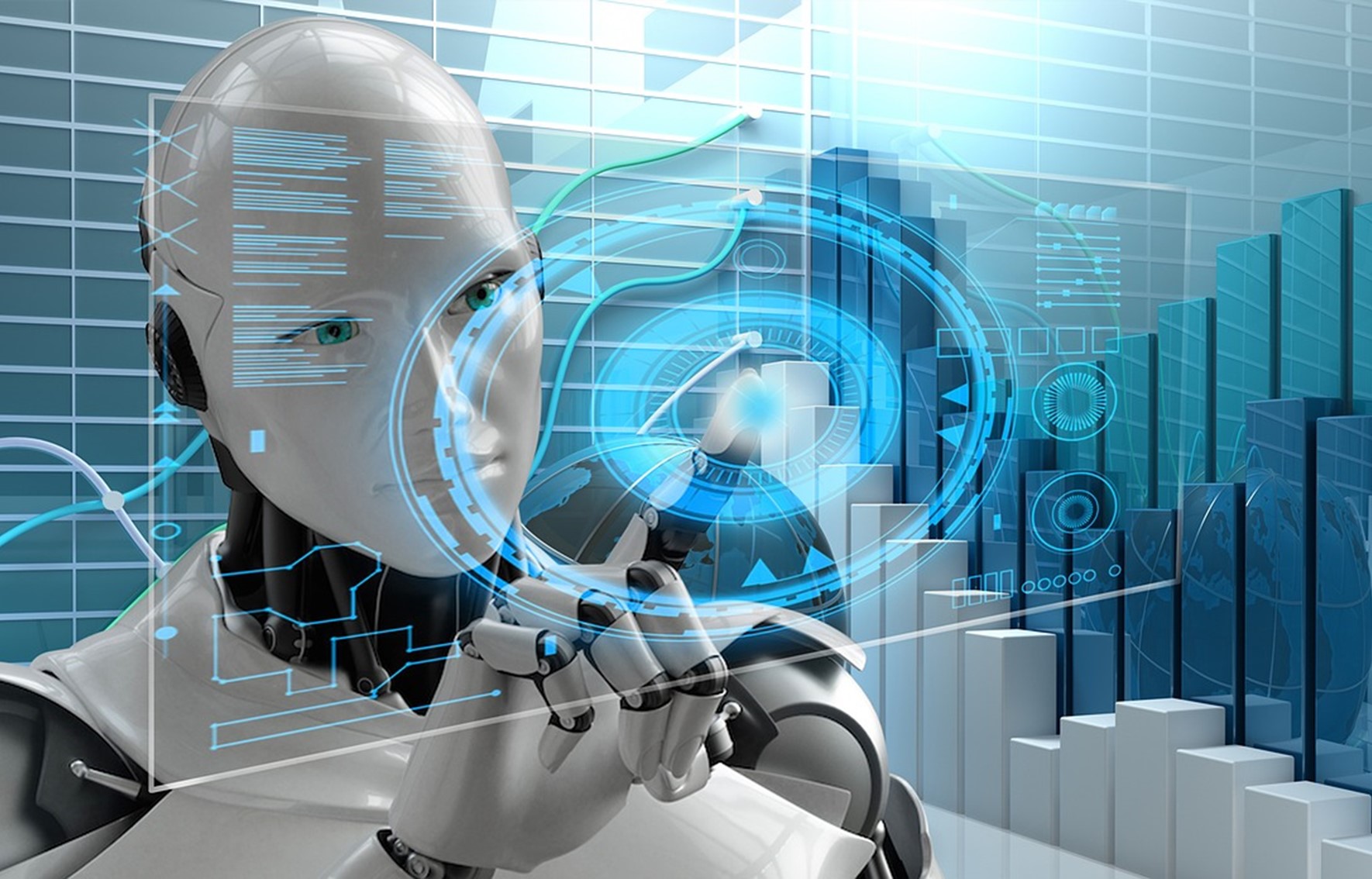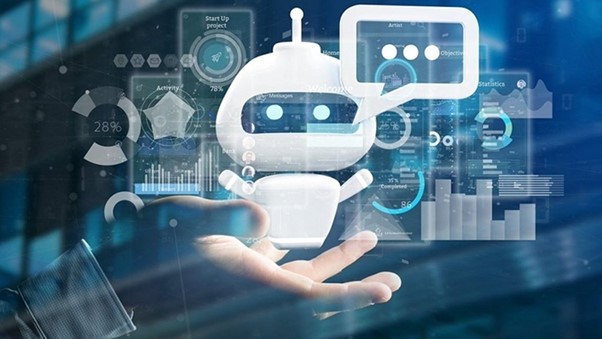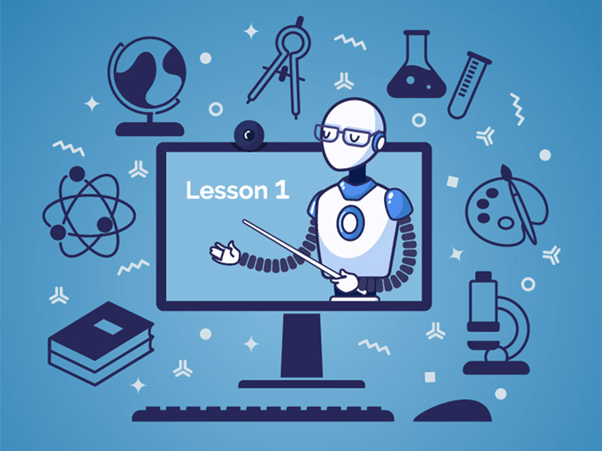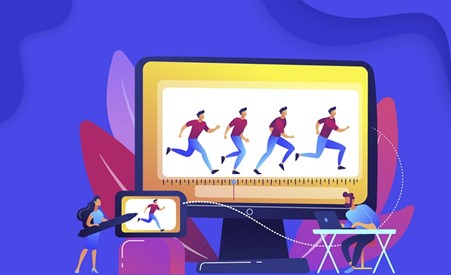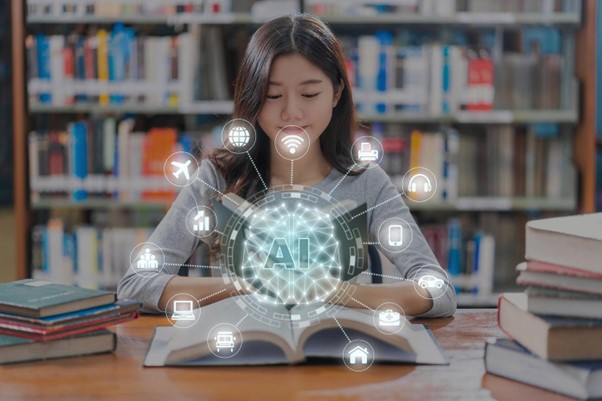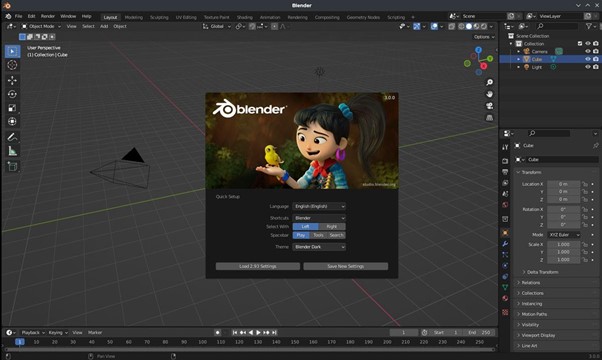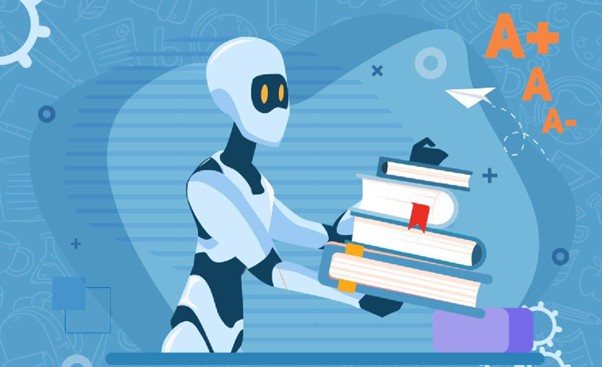Sự phát triển của trí tuệ nhân tạo trong ngành video 3D
[English Below]
|
|
Trí tuệ nhân tạo (AI) đã nhanh chóng nổi lên như một yếu tố thay đổi cuộc chơi trong nhiều ngành công nghiệp khác nhau và lĩnh vực 3D animation video cũng không ngoại lệ. Với những tiến bộ trong công nghệ AI, các nhà làm phim hoạt hình và nghệ sĩ hiện có quyền truy cập vào các công cụ và thuật toán mạnh mẽ đang thay đổi cách tạo, hiển thị và đưa hoạt ảnh lên màn ảnh. Trong bài viết này, chúng ta sẽ khám phá sự phát triển của AI trong lĩnh vực video 3D animation video và các ứng dụng tiềm năng của nó.
Nội dung bài viết:
1. Giai đoạn đầu của AI trong 3D animation video
2. Công nghệ AI trong 3D animation video ngày nay
3. Khả năng của AI trong tương lai
1. Giai đoạn đầu của AI trong 3D animation video
|
|
Việc sử dụng AI trong video 3D animation video có thể bắt nguồn từ giai đoạn đầu của hình ảnh do máy tính tạo ra (CGI) trong phim và hoạt hình. Vào những năm 1980, những bộ phim tiên phong như "Tron" và "The Last Starfighter" đã sử dụng các dạng AI ban đầu để tạo ra hiệu ứng hình ảnh đột phá. Những hoạt ảnh ban đầu do AI cung cấp này bị hạn chế về khả năng và dựa vào các thuật toán cơ bản để hiển thị và hoạt ảnh.
Trong những năm qua, AI trong 3D animation video đã phát triển cùng với sự phát triển của các thuật toán và kỹ thuật phức tạp hơn. Một tiến bộ đáng kể là việc sử dụng hoạt hình thủ tục, trong đó các thuật toán AI được sử dụng để mô phỏng các chuyển động và hành vi thực tế của các nhân vật và đối tượng. Điều này cho phép các nhà làm phim hoạt hình tạo ra các hoạt ảnh phức tạp với ít nỗ lực thủ công hơn.
2. Công nghệ AI trong 3D animation video ngày nay
Trong những năm gần đây, AI đã có những bước tiến đáng kể trong lĩnh vực 3D animation video, nhờ những tiến bộ trong học máy, học sâu và mạng lưới thần kinh. Những công nghệ này đã mở đường cho các công cụ và kỹ thuật tiên tiến hơn do AI hỗ trợ đang chuyển đổi toàn bộ quy trình hoạt hình.
2.1. Sáng tạo nội dung
|
|
AI đã cách mạng hóa việc tạo nội dung trong 3D animation video bằng cách tự động hóa các tác vụ như tạo mô hình, kết cấu và chiếu sáng. Các thuật toán AI có thể tạo mô hình 3D, kết cấu và môi trường dựa trên các tham số đầu vào, tiết kiệm thời gian và công sức quý báu của người làm hoạt hình.
2.2. Tạo nhân vật hoạt hình
|
|
AI cũng đã làm cho hoạt hình nhân vật chân thực và hiệu quả hơn. Sử dụng các thuật toán máy học, các nhà làm phim hoạt hình có thể đào tạo các mô hình AI để tạo ra các chuyển động tự nhiên và giống như thật cho các nhân vật, giảm nhu cầu tạo khung hình thủ công. Điều này cho phép các hoạt ảnh nhân vật năng động và biểu cảm hơn.
2.3. Sản xuất thực tế ảo
|
|
Sản xuất thực tế ảo liên quan đến việc tích hợp thời gian thực các yếu tố ảo và vật lý trong quá trình sản xuất hành động trực tiếp, đã được cách mạng hóa bởi AI. Các thuật toán AI có thể phân tích dữ liệu máy ảnh thời gian thực và tạo ra các môi trường và nhân vật ảo kết hợp nhuần nhuyễn với các cảnh quay hành động trực tiếp, cho phép các nhà làm phim hình dung và ghi lại các cảnh trong thời gian thực.
2.4. Hậu kỳ và VFX
|
|
AI cũng đang được sử dụng trong hậu kỳ và hiệu ứng hình ảnh (VFX) trong 3D animation video. Các thuật toán AI có thể tự động hóa các tác vụ như rotoscoping, loại bỏ đối tượng và phân loại màu, giúp quy trình làm việc sau sản xuất trở nên hiệu quả và hợp lý hơn.
3. Khả năng của AI trong tương lai
Các ứng dụng tiềm năng của AI trong 3D animation video là rất lớn và không ngừng phát triển. Khi các công nghệ AI tiếp tục phát triển, chúng ta có thể mong đợi nhiều ứng dụng đột phá hơn nữa trong tương lai. Ví dụ, AI có khả năng tạo ra các phong cách hoạt hình hoàn toàn mới mà các kỹ thuật hoạt hình truyền thống không thể thực hiện được. Các thuật toán AI có thể tạo hoạt ảnh theo các phong cách nghệ thuật khác nhau, bắt chước phong cách của các nghệ sĩ nổi tiếng hoặc thậm chí tạo ra tính thẩm mỹ thị giác hoàn toàn mới.
Một khả năng thú vị khác là việc sử dụng AI trong việc kể chuyện và tường thuật chi tiết. AI có tiềm năng cách mạng hóa cách kể chuyện trong 3D animation video bằng cách tạo ra các câu chuyện động và tương tác. Các thuật toán AI có thể phân tích dữ liệu từ nhiều nguồn, chẳng hạn như dữ liệu đầu vào của người dùng, tương tác thời gian thực và dữ liệu môi trường, để tạo cốt truyện được cá nhân hóa và thích ứng trong thời gian thực. Điều này mở ra những khả năng mới cho trải nghiệm kể chuyện tương tác trong trò chơi, thực tế ảo và thực tế tăng cường.
Hơn nữa, AI có thể tăng cường quá trình hợp tác và sáng tạo trong 3D animation video bằng cách cung cấp các công cụ thông minh cho các nghệ sĩ và nhà làm phim hoạt hình. Ví dụ: thuật toán AI có thể phân tích và giải thích các phong cách nghệ thuật, cử chỉ và biểu cảm để hỗ trợ các nghệ sĩ tạo hoạt ảnh phù hợp với tầm nhìn sáng tạo của họ. Các công cụ hỗ trợ AI cũng có thể cung cấp phản hồi thời gian thực về hoạt ảnh, giúp các nghệ sĩ cải thiện công việc của họ và hợp lý hóa quy trình lặp lại.
Ngoài ra, AI có thể đóng một vai trò quan trọng trong việc tự động hóa các tác vụ lặp đi lặp lại và tốn thời gian trong 3D animation video, giải phóng các nhà làm phim hoạt hình và nghệ sĩ để tập trung vào các khía cạnh sáng tạo hơn trong công việc của họ. Ví dụ: thuật toán AI có thể tự động tạo hoạt ảnh hát nhép, nét mặt hoặc mô phỏng vật lý thực tế, giúp giảm nhu cầu tạo khung hình thủ công, đồng thời tiết kiệm thời gian và công sức.
Tuy nhiên, với việc sử dụng AI ngày càng nhiều trong 3D animation video, cũng có những cân nhắc về đạo đức và xã hội cần được giải quyết. Chẳng hạn, có những lo ngại về khả năng mất việc làm cho các nhà làm phim hoạt hình và nghệ sĩ khi AI tiếp tục tự động hóa một số tác vụ nhất định trong quy trình hoạt hình. Ngoài ra, có những lo ngại về đạo đức xung quanh việc sử dụng nội dung do AI tạo ra, chẳng hạn như các vấn đề về bản quyền, quyền sở hữu và tính xác thực.
Tóm lại, sự phát triển của AI trong lĩnh vực 3D animation video đã mang lại những tiến bộ đáng kể trong việc tạo nội dung, hoạt hình nhân vật, kết xuất, sản xuất ảo, hoạt hình thời gian thực và quy trình làm việc sau sản xuất. Tương lai của 3D animation video chắc chắn gắn liền với sự phát triển và tích hợp liên tục của các công nghệ AI, hứa hẹn sẽ đem đến những khả năng thú vị cho toàn bộ ngành hoạt hình.
English below
THE EVOLUTION OF ARTIFICIAL INTELLIGENCE IN THE 3D VIDEO INDUSTRY
|
|
Artificial Intelligence (AI) has rapidly emerged as a transformative factor across various industries, and the realm of 3D animation video is no exception. With advancements in AI technology, animation filmmakers and artists now have access to powerful tools and algorithms that are reshaping the way animations are created, displayed, and brought to the screen. In this article, we will delve into the development of AI in the domain of 3D animation video and explore its potential applications.
Article content:
1. PHASES OF AI IN 3D ANIMATION VIDEO
2. AI TECHNOLOGY IN 3D ANIMATION VIDEO TODAY
3. AI's Future Potential in 3D Animation Video
1. PHASES OF AI IN 3D ANIMATION VIDEO
|
|
The integration of Artificial Intelligence (AI) into 3D animation videos can be traced back to the early stages of computer-generated imagery (CGI) in films and animations. In the 1980s, pioneering films like "Tron" and "The Last Starfighter" utilized early forms of AI to create groundbreaking visual effects. These initial AI-generated animations were limited in capabilities and relied on basic algorithms for display and animation.
Over the years, AI in 3D animation videos has evolved alongside the development of more sophisticated algorithms and techniques. A significant advancement has been the utilization of procedural animation, where AI algorithms are employed to simulate the real-world motions and behaviors of characters and objects. This enables animation filmmakers to create complex animations with less manual effort. The application of AI in this field has unlocked new avenues for creativity, allowing animations to exhibit a level of realism and intricacy that was previously challenging to achieve. As AI algorithms continue to advance, they offer filmmakers and artists innovative ways to enhance the storytelling and visual quality of 3D animation videos.
2. AI TECHNOLOGY IN 3D ANIMATION VIDEO TODAY
In recent years, Artificial Intelligence (AI) has made significant strides in the realm of 3D animation video, thanks to advancements in machine learning, deep learning, and neural networks. These technologies have paved the way for more advanced tools and techniques supported by AI, transforming the entire animation process.
2.1. Content Creation
|
|
AI has revolutionized content creation in 3D animation videos by automating tasks such as modeling, texturing, and lighting. AI algorithms can generate 3D models, textures, and environments based on input parameters, saving valuable time and effort for animators.
2.2. Character Animation
|
|
AI has also made character animation more realistic and efficient. By employing machine learning algorithms, animation filmmakers can train AI models to produce natural and lifelike movements for characters, reducing the need for manual frame-by-frame animation. This enables more dynamic and expressive character animations.
These advancements in AI-driven technology have enabled animation creators to produce higher-quality animations more efficiently. The integration of AI into the animation process has expanded creative possibilities and elevated the overall quality of 3D animation videos.
2.3. Virtual Production
|
|
Virtual production, involving the real-time integration of virtual and physical elements during direct action production, has been revolutionized by AI. AI algorithms can analyze real-time camera data and generate virtual environments and characters seamlessly integrated with live action scenes, enabling filmmakers to visualize and capture scenes in real-time.
2.4. Post-Production and VFX
|
|
AI is also being utilized in post-production and Visual Effects (VFX) within 3D animation videos. AI algorithms can automate tasks such as rotoscoping, object removal, and color grading, making the post-production process more efficient and streamlined.
The integration of AI into these aspects of 3D animation video production enhances the quality and realism of the final product while reducing the time and effort required for manual tasks. As AI continues to evolve, it holds the potential to reshape the entire landscape of 3D animation, unlocking new creative possibilities and efficiencies for animators and filmmakers alike.
3. AI's Future Potential in 3D Animation Video
The potential applications of AI in 3D animation video are vast and continually evolving. As AI technologies continue to advance, we can expect even more groundbreaking applications in the future. For instance, AI has the capability to create entirely new animation styles that traditional animation techniques cannot achieve. AI algorithms can generate animations in various artistic styles, mimicking the styles of famous artists or even creating entirely new visual aesthetics.
Another exciting possibility is the use of AI in storytelling and narrative detail. AI has the potential to revolutionize storytelling in 3D animation videos by creating dynamic and interactive narratives. AI algorithms can analyze data from various sources, such as user input, real-time interactions, and environmental data, to create personalized and adaptive narratives in real-time. This opens up new possibilities for interactive storytelling experiences in games, virtual reality, and augmented reality.
Furthermore, AI can enhance collaboration and creativity in 3D animation video by providing intelligent tools for animators and filmmakers. For example, AI algorithms can analyze and interpret artistic styles, gestures, and expressions to assist artists in creating animations that align with their creative vision. AI-powered support tools can also provide real-time feedback on animations, helping artists refine their work and streamline iterative processes.
Moreover, AI can play a crucial role in automating repetitive and time-consuming tasks in 3D animation video, freeing up filmmakers and artists to focus on more creative aspects of their work. For example, AI algorithms can automatically generate lip-sync animations, facial expressions, or simulate real-world physics, reducing the need for manual frame-by-frame creation and saving time and effort.
However, as AI's usage becomes more prevalent in 3D animation video, there are ethical and societal considerations that need to be addressed. Concerns arise, such as the potential for job displacement for animators and artists as AI continues to automate certain tasks in the animation process. Additionally, ethical concerns surround the use of AI-generated content, including issues related to copyright, ownership, and authenticity.
In conclusion, the development of AI in the field of 3D animation video has brought significant advancements in content creation, character animation, rendering, virtual production, real-time animation, and post-production workflows. The future of 3D animation video is undoubtedly intertwined with the ongoing development and integration of AI technologies, promising exciting possibilities for the entire animation industry.
Tròn House
Xem thêm:
CÁC ỨNG DỤNG CỦA TRÍ TUỆ NHÂN TẠO TRONG 3D ANIMATION VIDEO
VIDEO QUẢNG CÁO 3D: TƯƠNG LAI CỦA TIẾP THỊ VÀ TƯƠNG TÁC
TĂNG NHẬN DIỆN THƯƠNG HIỆU QUA VIDEO ANIMATION

